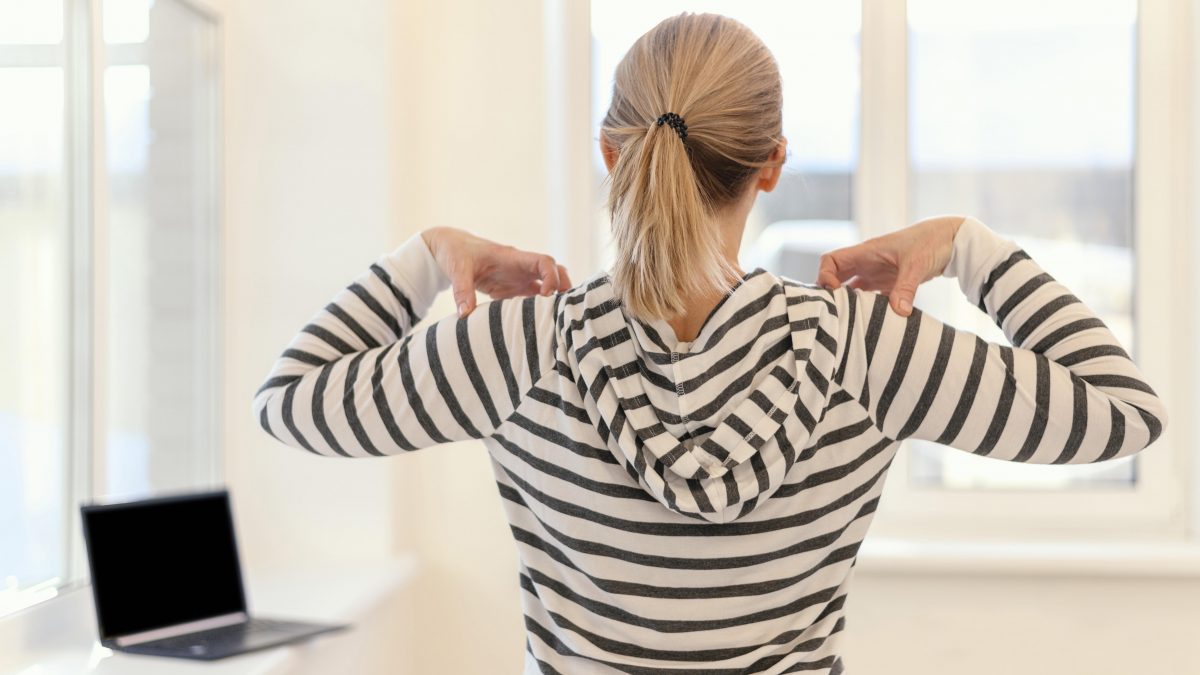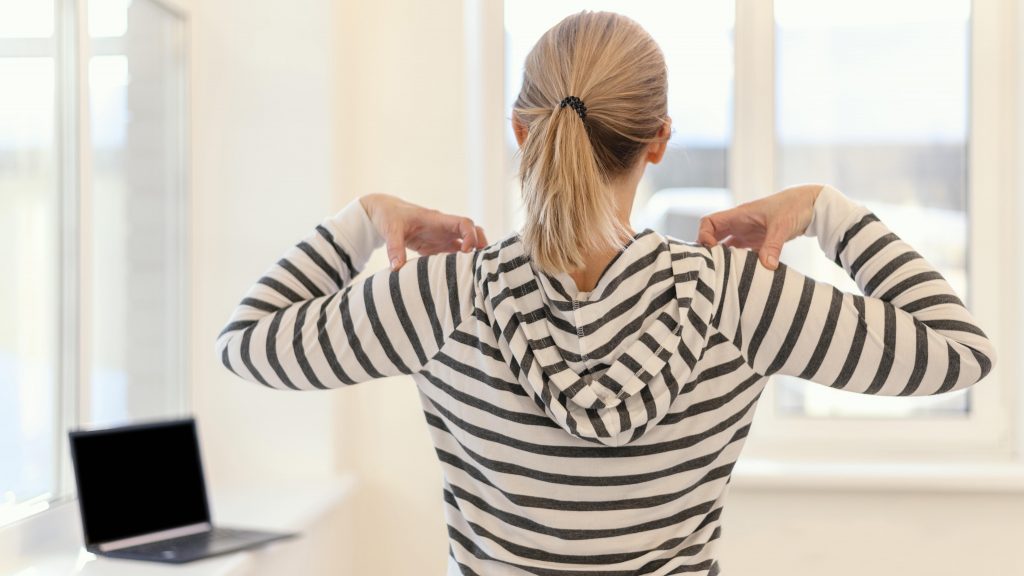
Table of Contents
- What is Forward Head Posture?
- Causes of Forward Head Posture
- How to Fix Neck Posture?
- Exercises to Address Forward Head Posture
- Consult a Doctor for an Exercise Plan
Forward head posture refers to a posture in which the head is positioned in front of the shoulders instead of in alignment with them. This condition develops by assuming a frequent leaning forward posture that rounds the upper back and shoulders, and the head is thrust forward. This is a common problem, but it may be corrected if recognized early by adopting a targeted exercise routine.
What is Forward Head Posture?
The thoracic spine (upper back) supports the head and neck. When you round the upper back and shoulders, you experience neck flexion, which means the neck bends forward as the lower cervical spine (neck) flexes. The head also moves forward as it accommodates the change in the cervical and thoracic spine’s positioning. The general process is as follows.
- Lower cervical vertebrae are bent
- Upper cervical vertebrae are lengthened
- Cervical ligaments weaken
- Cervical curve is lost
- Weight of the head moves in front of the cervical curve or line of gravity
- Pressure is applied on the spine, muscles and joints in the neck and upper back
- Nerves, veins and arteries are unnaturally stretched and compressed
The more often the leaning forward posture is used, the more likely a muscle imbalance will develop because the neck must support a greater head weight. The head is positioned an inch or more in front of the first neck vertebra with a forward head posture. For each inch your head protrudes forward, an additional unbalanced weight load is placed on the shoulders and neck.
Causes of Forward Head Posture
In some cases, kyphosis, the rounding of the neck and shoulders, may develop first for several reasons, including diseases like arthritis, osteoporosis fractures, injury or spondylolisthesis. However, a repetitive leaning forward posture is also associated with the development of kyphosis. Some causes of forward head posture not due to disease or injury include the following.
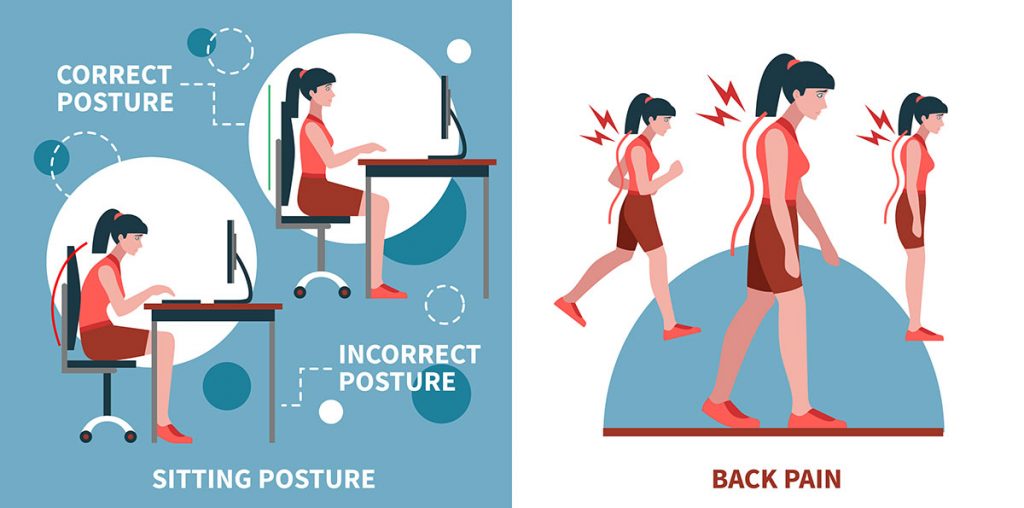
- Leaning forward at a desk to view a computer screen
- Spending too much time looking at a cell phone
- Sleeping with too many pillows propping up the head
- Reading while lying down with the head elevated on something like a sofa arm
- Repeatedly driving for long hours
- Doing a hobby requiring getting close-up views of what is being worked on, like sewing projects
- Working at a job requiring repetitive movements, like a hairstylist or computer programmer
- Regularly carrying a heavy backpack
Various studies have found that forward head posture significantly correlates to neck pain in adults. Age has been found to play a significant role in the relationship between neck pain and forward head posture.
Other side effects of forward head posture include stiffness, fatigue, muscle spasms, unbalanced gait, decreased neck motion range, headaches and numbness in the arms and hands. If not corrected, long-term effects of forward head posture include osteoporosis, bulging spinal discs and cervical spine arthritis.
How to Fix Neck Posture?
You can learn how to fix bad posture and neck issues. The first step is learning the correct posture to maintain. Good posture means the head is aligned (plumb) with the spine. This may differ for each person, but good posture generally means not rounding the neck and keeping the shoulders relaxed during activities. The ears are located over the shoulders.
For example, good sitting posture at a computer includes keeping the back straight and the top of the monitor at eye level. If you do a lot of machine sewing for work or as a hobby, keep the back straight, shoulders relaxed, arms close to your side and the sewing surface at the same level as bent arms. Anytime you are sitting, it is important to be conscious of posture. Slouching contributes to forward head posture.
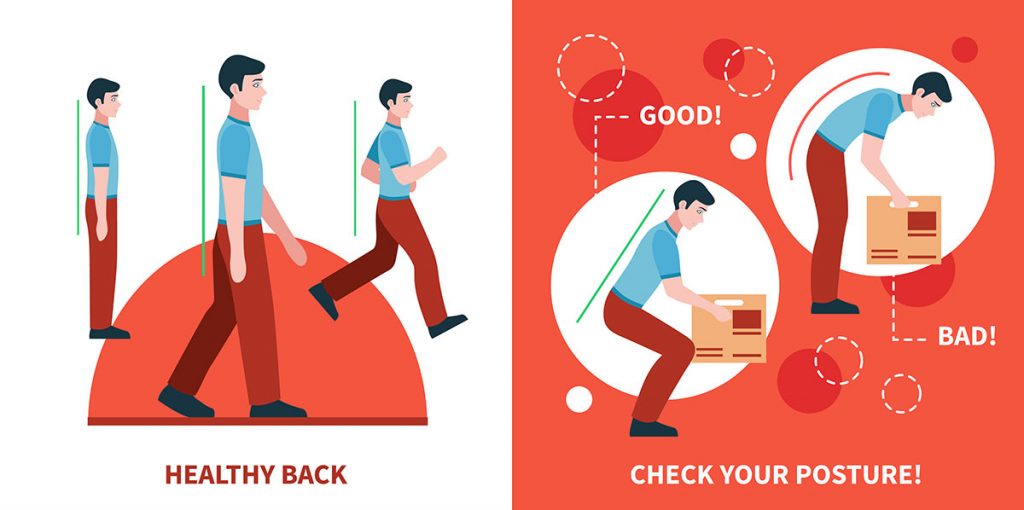
When doing other activities, like reading and sleeping, do not lay your head on anything that forces it to curve. Maintaining neck alignment is always important.
Exercises to Address Forward Head Posture
You can do neck posture exercises to strengthen and stretch muscles and ligaments to restore a posture that re-aligns the head and relieves side effects by restoring muscle strength, flexibility and alignment. Exercises like the following are helpful. If it is a standing exercise, stand straight and begin with the chin held parallel to the floor. If a sitting exercise, sit with a straight back and the head held straight.
Following are some examples of exercises that have proven to help fix forward head posture.
1. Chin Tucks
Tuck the chin towards the chest and move the head up and down, holding each head tuck for three breaths. You can also do this stretching exercise while lying down with a rolled towel under the neck.
2. Head Tilts
Tilt the head towards the left shoulder and hold for 10-15 seconds. Repeat the tilt towards the other shoulder.
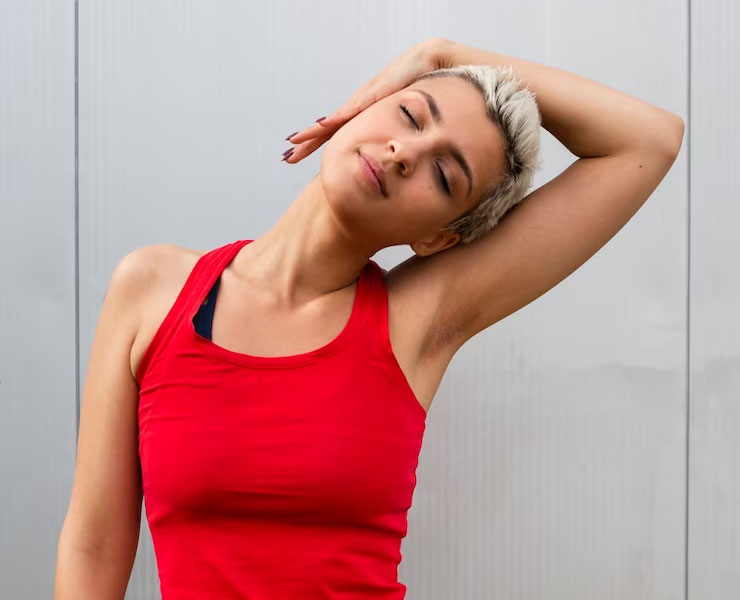
3. Flexion With Rotation
Look over one shoulder and then drop the chin to the chest. Hold the chin down for up to 15 seconds. Repeat several times for each shoulder.
4. Retraction
Stand in a door frame and place the back of your head against it. Relax the arms and pinch the shoulder blades while moving them down and back against the door frame. Hold each stretch for five seconds.
5. Diamond Press
Lie face down and place your palms face down on the floor. Bend the elbows and make a diamond shape with the arms. Rest the forehead on the backs of the hand. Press the hands and forearms into the floor and lift your chest and head while tucking your chin toward the chest. This will work your back while holding the position. Lower your chest down.
This is a sample of exercises addressing forward head posture and its symptoms. The exercises should be continued for weeks. Your doctor can evaluate your condition and recommend a set of home exercises.
Consult a Doctor for an Exercise Plan
If you are experiencing forward head posture and pain, discussing your condition with a doctor is important. A six-week study found that stabilizing exercises significantly improved head and shoulder posture and pain and enhanced function. The study participants who did home exercises combined with manual therapy experienced even better results. In fact, all appropriate exercise interventions can improve the angle of the vertebrae and shoulder blade alignment, delivering much-needed relief.
Sources
- https://www.ncbi.nlm.nih.gov/pmc/articles/PMC5088155/
- https://pubmed.ncbi.nlm.nih.gov/30584494/
- https://www.ncbi.nlm.nih.gov/pmc/articles/PMC6942109/
- https://bmcmusculoskeletdisord.biomedcentral.com/articles/10.1186/s12891-019-2438-y
- https://www.ncbi.nlm.nih.gov/pmc/articles/PMC5684019/
